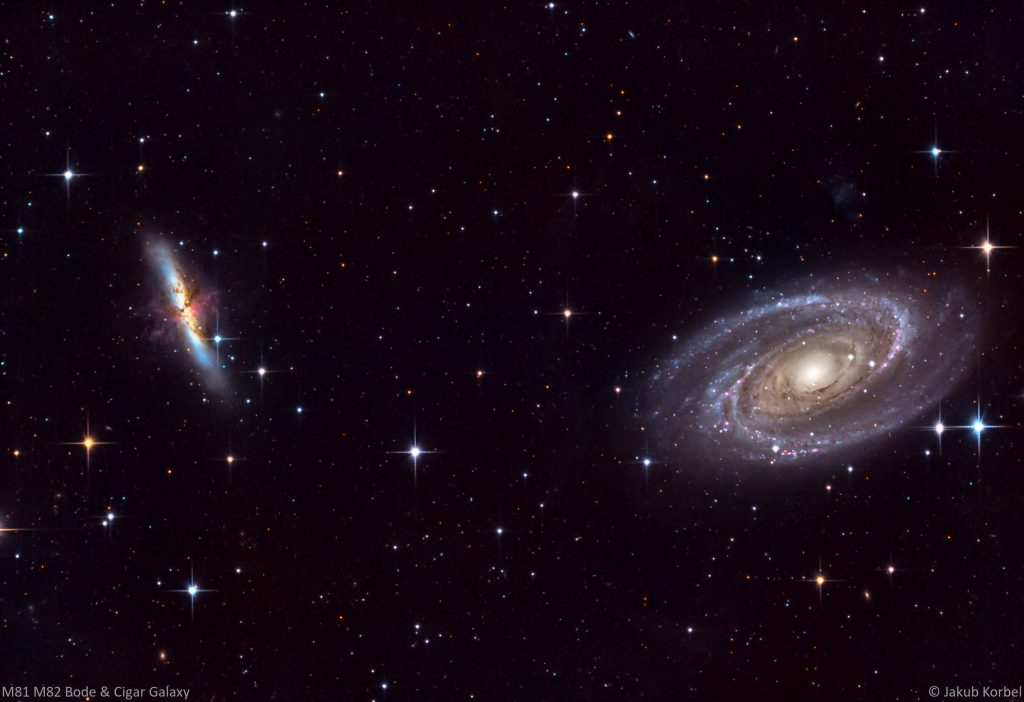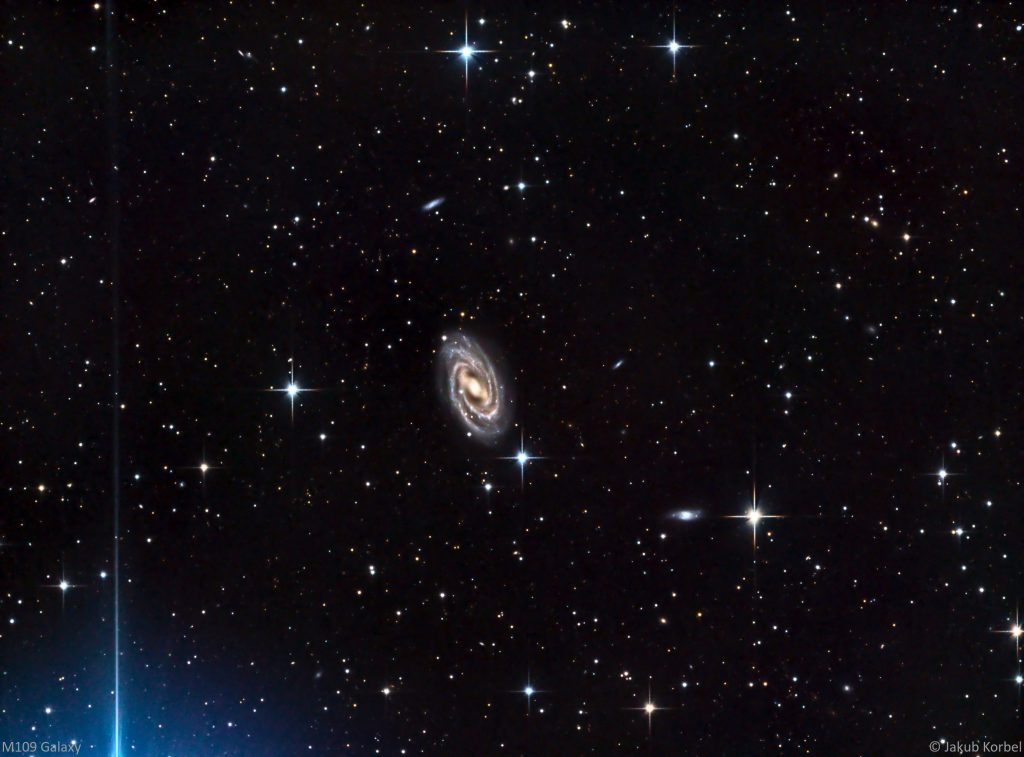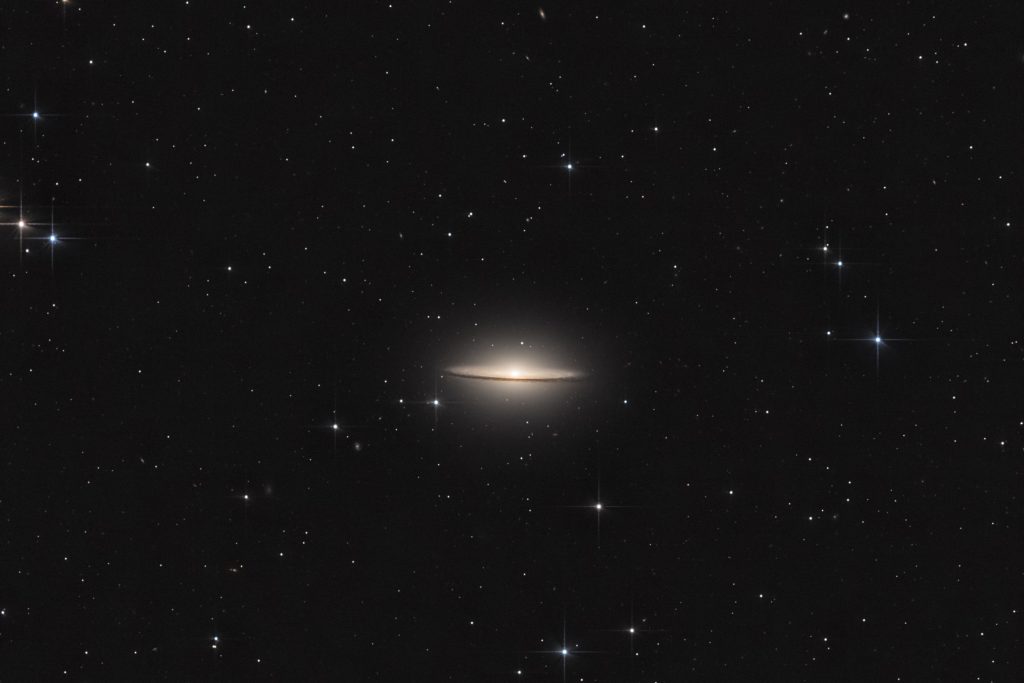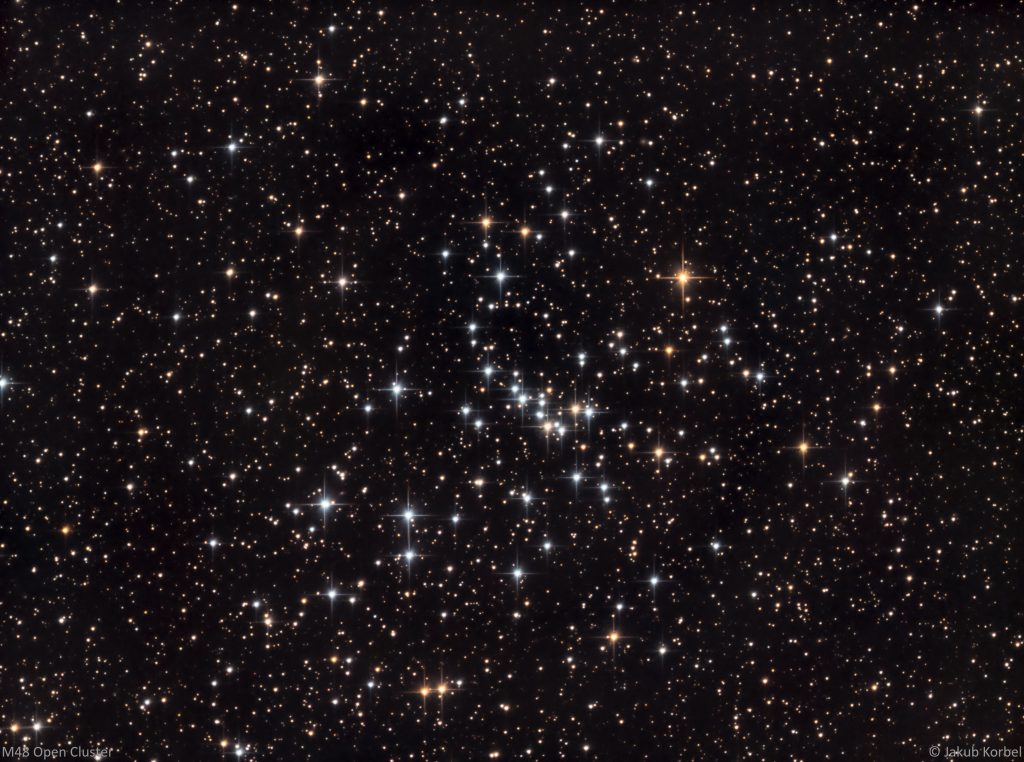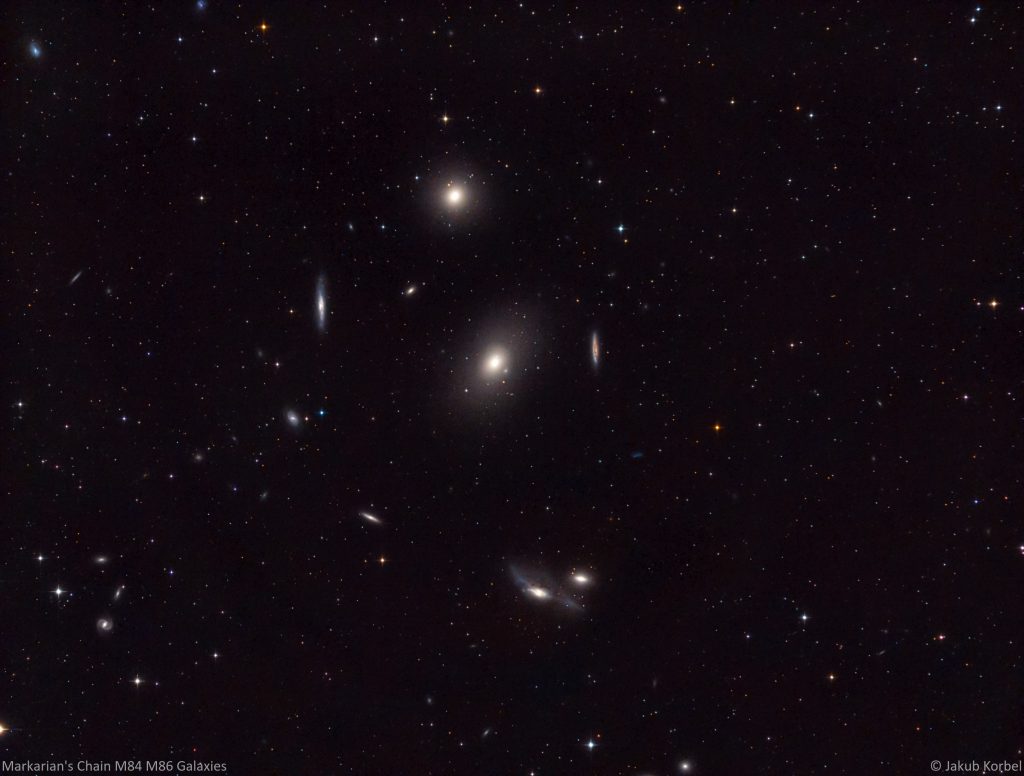Galactic harvest continues. Here again, I focused my scope on previously photographed DSO. The galaxy is located in the constellation Canes Venatici (hunting dogs) not far from the famous Ursa Major (great bear) and is approximately 24 million light-years from us.
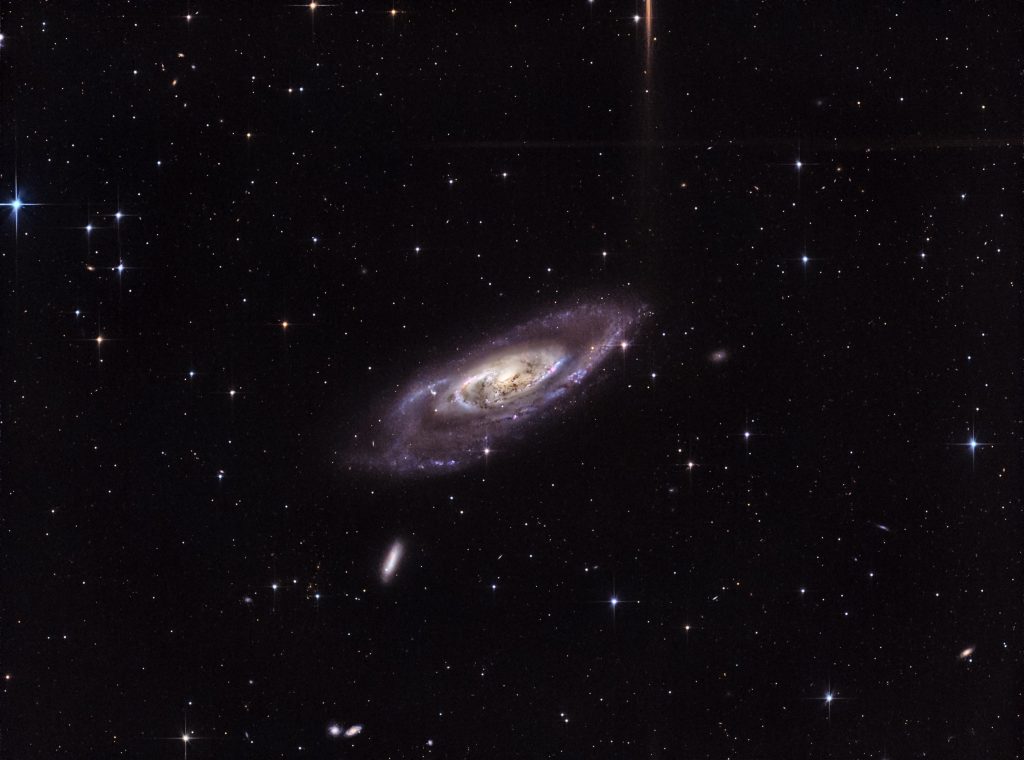
| Telescope: | Newton 254/1000 mm |
| Aperture: | 254 mm |
| Focal length: | 1000 mm |
| Mount: | Gemini GF53f |
| Autoguiding: | Orion Mini, TS 50/160 mm |
| Camera: | Moravian instruments G2 8300M @-30C |
| Corrector: | GPU |
| Filters: | Baader L, RGB |
| Exposure: | 27xL 300s bin 1×1, 15xRGB 200 s bin 2×2 |
| Date: | 2017-03-30 |

